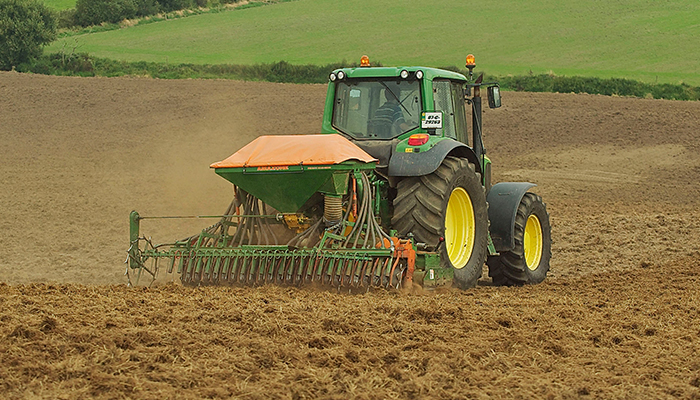13 May 2024
The principles of reseeding

Reseeding levels in Ireland are low. Less than 2% of our national grassland area is reseeded annually. As grass is our dominant feed during the main grazing season, and the primary source of winter forage in the form of grass silage, the low level of reseeding must be addressed.
Swards with low perennial ryegrass content are costing farmers up to €300/ha per year due to reduced herbage production and reduced nitrogen (N) use efficiency. Reseeding costs approximately €750/ha, however the increased profitability of the new sward would cover the cost in just two years making reseeding one of the most cost effective on-farm investments.
Cultivation techniques
How paddocks are prepared for reseeding depends on soil type, quantity of underlying stone and machine/contractor availability. While there are many cultivation and sowing methods available, once completed correctly all methods are equally effective.
Key principles to follow when reseeding:
- Aim to reseed as early in the year as possible, April, May, June, when soil temperatures are high and increasing, and there is adequate opportunity for weed control;
- Soil sample for phosphorous (P), potassium (K) and pH;
- Spray off the old pasture with a minimum of 5L/ha of glyphosate; allow a minimum of 7-10 days after spraying before cultivating;
- Prepare a fine, firm seedbed;
- Use grass and white clover varieties from the Teagasc Pasture Profit Index and the Department of Agriculture, Food and the Marine Recommended List;
- Sow at a rate of 25 to 28kg/ha of grass plus 2.5 to 5.0kg/ha of a medium leaved clover
- Include no more than three or four grass cultivars per mix. Keep the heading date range in a mix narrow – no more than seven days;
- Avoid sowing white clover seed too deep; sowing depth – approx. 10mm;
- Roll well to ensure good contact between the seed and the soil;
- Apply a suitable post-emergence spray when weeds are at seedling stage.
Timing of reseeding
Timing of reseeding depends to a large extent on weather conditions, and grass supply. Generally, total grass production from a spring reseed is as much as, if not more than, old permanent pasture in the establishment year. Establishing clover is more reliable in spring than autumn due to the stability of soil temperatures.
Conditions for post-emergence weed control are also more favourable following spring reseeding. While autumn reseeding may make sense from a feed budget perspective, soil conditions deteriorate as autumn progresses, lower soil temperatures can reduce seed germination, and variable weather conditions reduce the opportunity to apply post-emergence spray and to graze the new sward.
Management of reseeds
Weed control is an essential part of the reseeding process. Weeds in new reseeds are best controlled when grass is at the 2-3 leaf stage. Docks and chickweed are two of the most critical weeds to control in new reseeds; it is important to control these at the seedling stage, by applying the herbicide before the first grazing. When clover is included in the swards, it is important to use a clover safe herbicide where available. All pesticide users should comply with the regulations as outlined in the Sustainable Use Directive (SUD).
Care must be taken when grazing newly reseeded swards. The sward should be grazed as soon as the new grass plants roots are strong enough to withstand grazing (root stays anchored in the ground when pulled). Early grazing is important to allow light to the base of the plant to encourage tillering and clover establishment. Light grazing by animals such as calves, weanlings or sheep is preferred as ground conditions may still be somewhat fragile, depending on the seedbed preparation method used.
The first grazing of a new reseed can be completed at a pre-grazing yield of 600 to 1,000kg dry matter (DM)/ha. Frequent grazing of the reseeds at lower pre-grazing yields (< 1,100 kg DM/ha) during the first year post-establishment will have a beneficial effect on the sward. The aim is to produce a uniform, well tillered, dense sward. If possible reseeded swards should not be closed for silage in their first year of production, as the shading effect of heavy covers of grass will inhibit tillering of the grass plant and clover establishment resulting in an open sward which is liable to weed ingress.
Conclusion
Reseeding in spring and early summer is preferable to autumn reseeding. There is little difference between reseeding methods once a firm seedbed is established and good seed soil contact is achieved. Many management factors affect the success of reseeded swards. Good management after sowing is just as important as decisions around timing and methods of reseeding.
This article by Dr Philip Creighton first appeared in the Moorepark Open Day book – Irish Dairying Securing a sustainable future. Access the full publication here.
